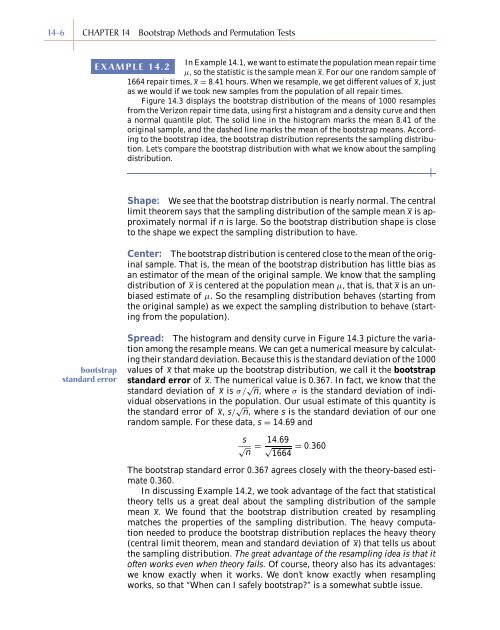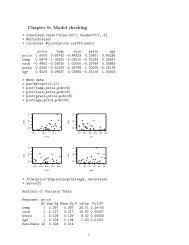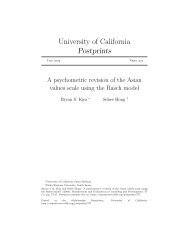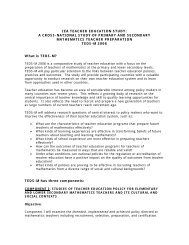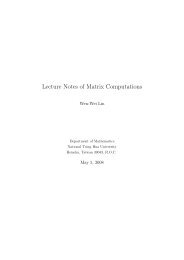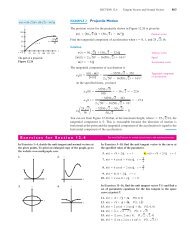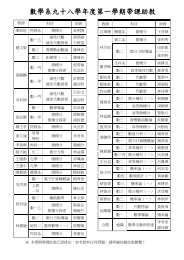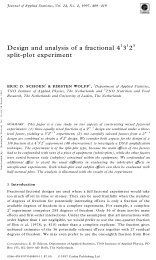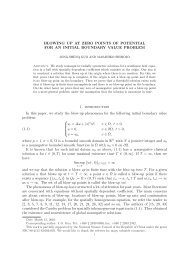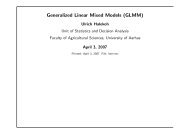Chapter 14 - Bootstrap Methods and Permutation Tests - WH Freeman
Chapter 14 - Bootstrap Methods and Permutation Tests - WH Freeman
Chapter 14 - Bootstrap Methods and Permutation Tests - WH Freeman
You also want an ePaper? Increase the reach of your titles
YUMPU automatically turns print PDFs into web optimized ePapers that Google loves.
<strong>14</strong>-6 CHAPTER <strong>14</strong> <strong>Bootstrap</strong> <strong>Methods</strong> <strong>and</strong> <strong>Permutation</strong> <strong>Tests</strong><br />
In Example <strong>14</strong>.1, we want to estimate the population mean repair time<br />
EXAMPLE <strong>14</strong>.2<br />
µ, so the statistic is the sample mean x. For our one r<strong>and</strong>om sample of<br />
1664 repair times, x = 8.41 hours. When we resample, we get different values of x,just<br />
as we would if we took new samples from the population of all repair times.<br />
Figure <strong>14</strong>.3 displays the bootstrap distribution of the means of 1000 resamples<br />
from the Verizon repair time data, using first a histogram <strong>and</strong> a density curve <strong>and</strong> then<br />
a normal quantile plot. The solid line in the histogram marks the mean 8.41 of the<br />
original sample, <strong>and</strong> the dashed line marks the mean of the bootstrap means. According<br />
to the bootstrap idea, the bootstrap distribution represents the sampling distribution.<br />
Let’s compare the bootstrap distribution with what we know about the sampling<br />
distribution.<br />
Shape: We see that the bootstrap distribution is nearly normal. The central<br />
limit theorem says that the sampling distribution of the sample mean x is approximately<br />
normal if n is large. So the bootstrap distribution shape is close<br />
to the shape we expect the sampling distribution to have.<br />
Center: The bootstrap distribution is centered close to the mean of the original<br />
sample. That is, the mean of the bootstrap distribution has little bias as<br />
an estimator of the mean of the original sample. We know that the sampling<br />
distribution of x is centered at the population mean µ, that is, that x is an unbiased<br />
estimate of µ. So the resampling distribution behaves (starting from<br />
the original sample) as we expect the sampling distribution to behave (starting<br />
from the population).<br />
bootstrap<br />
st<strong>and</strong>ard error<br />
Spread: The histogram <strong>and</strong> density curve in Figure <strong>14</strong>.3 picture the variation<br />
among the resample means. We can get a numerical measure by calculating<br />
their st<strong>and</strong>ard deviation. Because this is the st<strong>and</strong>ard deviation of the 1000<br />
values of x that make up the bootstrap distribution, we call it the bootstrap<br />
st<strong>and</strong>ard error of x. The numerical value is 0.367. In fact, we know that the<br />
st<strong>and</strong>ard deviation of x is σ/ √ n, where σ is the st<strong>and</strong>ard deviation of individual<br />
observations in the population. Our usual estimate of this quantity is<br />
the st<strong>and</strong>ard error of x, s/ √ n, where s is the st<strong>and</strong>ard deviation of our one<br />
r<strong>and</strong>om sample. For these data, s = <strong>14</strong>.69 <strong>and</strong><br />
s<br />
√ n<br />
= <strong>14</strong>.69 √<br />
1664<br />
= 0.360<br />
The bootstrap st<strong>and</strong>ard error 0.367 agrees closely with the theory-based estimate<br />
0.360.<br />
In discussing Example <strong>14</strong>.2, we took advantage of the fact that statistical<br />
theory tells us a great deal about the sampling distribution of the sample<br />
mean x. We found that the bootstrap distribution created by resampling<br />
matches the properties of the sampling distribution. The heavy computation<br />
needed to produce the bootstrap distribution replaces the heavy theory<br />
(central limit theorem, mean <strong>and</strong> st<strong>and</strong>ard deviation of x) that tells us about<br />
the sampling distribution. The great advantage of the resampling idea is that it<br />
often works even when theory fails. Of course, theory also has its advantages:<br />
we know exactly when it works. We don’t know exactly when resampling<br />
works, so that “When can I safely bootstrap?” is a somewhat subtle issue.


